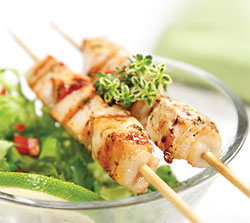regular diet (weight loss) phase 4
 This phase is not the last, but you're almost there. This phase is the regular food phase you will remain on while still losing weight. You should be able to start this phase about 6 weeks after surgery. This phase includes solid food eaten in very small portions. Most foods, with some exceptions such as tough meats like beef, can be eaten as long as they are reduced in fat and sugar.
This phase is not the last, but you're almost there. This phase is the regular food phase you will remain on while still losing weight. You should be able to start this phase about 6 weeks after surgery. This phase includes solid food eaten in very small portions. Most foods, with some exceptions such as tough meats like beef, can be eaten as long as they are reduced in fat and sugar.
It will be to your advantage to know and comply with this phase well, this phase is the tool you will need for weight loss success.
The 5-10-15 guideline
A good guideline is to keep fat grams in the single digits or closer to 5 grams,10 grams of sugar and carbs should be around 15.
Portion size for each meal should be no less than 1/2 cup and no more than 1 cup in size. Meat portions should not exceed 2 ounces per meal. This is recommended, however, personally with hypoglycemia, (I discovered at 3 years out from surgery, that I have to get in more protein to sustain my blood sugar, this works best for me, around 2 1/2 to 3 ounces, depending on the density of the protein). Remember: guidelines are in place to help you succeed... they are not hard, fast "rules". The aim is to keep your portions small, eating what works for you to be successful.
You will be eating the same foods as on the pureed diet for the most part, but they won't all be soft at this point.
Protein is important
At this point you may be able to reduce the protein drink to one a day or bar consumption to one a day and substitute low fat lunch meat slices or low fat cheese slices as a snack between meals. Make sure your protein intake is 50-60gms from meals and snacks before reducing shake amounts.
Getting enough food?
If you are able to consume 1 cup worth of food from the protein and carb list and still have room for more, pick a low carb fruit and vegetable to add to the meal. If you have found that you have stopped losing weight or are starting to gain weight, keep the carb portion to 1/4 cup or one serving and add 1/4 to 1/2 cooked vegetables.
Precautions:
Chew food very well. There is a risk of blockage if you swallow large bites. After a while this will become a habit, so practice, practice, practice.
Foods to avoid:
Tough meats or steaks (your new pouch can not digest these for at least a year)
Untoasted bread
Stringy vegetables like celery, corn, spinach in a can or raw
Membranes of oranges and grapefruit, skins of various fruits and vegetables like apples, pears, and potatoes (skins of fruits and vegetable should be avoided until your pouch is mature, then you need the fiber to maintain good health).
Coconut, seeds, and nuts (early on this is a good suggestion, remember these foods are healthy with the limits and can be added after your pouch is mature).
Make difficult foods easier to digest
Toast bread
Remove membranes from oranges and grapefruits
Peel skins of fruits and vegetables such as apples, pears, and potatoes (see above)
Stick to fish, sauteed chicken, and more tender pork selections.
Very tender red meats, such as finely ground hamburger, (less often) and after one year out, very tender beef tenderloin can be added.
References (1)
-
 Response: dreamhost
Response: dreamhost

Reader Comments